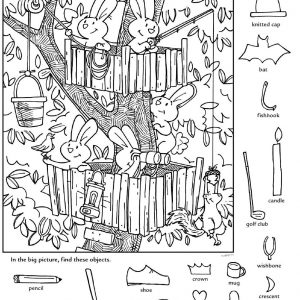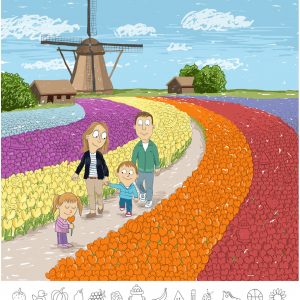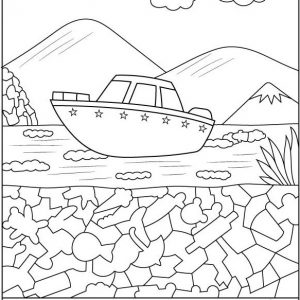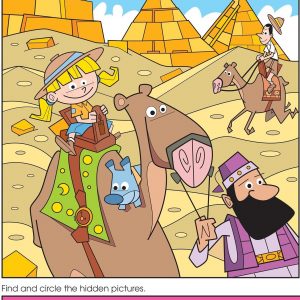Mystical Faces in the Forest: Unlocking the Secrets of the “Tree of Faces” Illusion
Introduction: The Allure of Hidden Portraits
Have you ever stared at the gnarled bark of a tree and suddenly spotted a human face staring back at you? That’s the enchanting power of the “Tree of Faces” illusion—a hand-drawn masterpiece where every twist of the trunk and burst of twigs conceals a secret visage. In this article, we’ll dive into why these hidden portraits captivate us, explore the art and psychology behind pareidolia, and offer tips on creating your own forest of faces. Ready to uncover the magic hiding in every branch? Let’s embark.
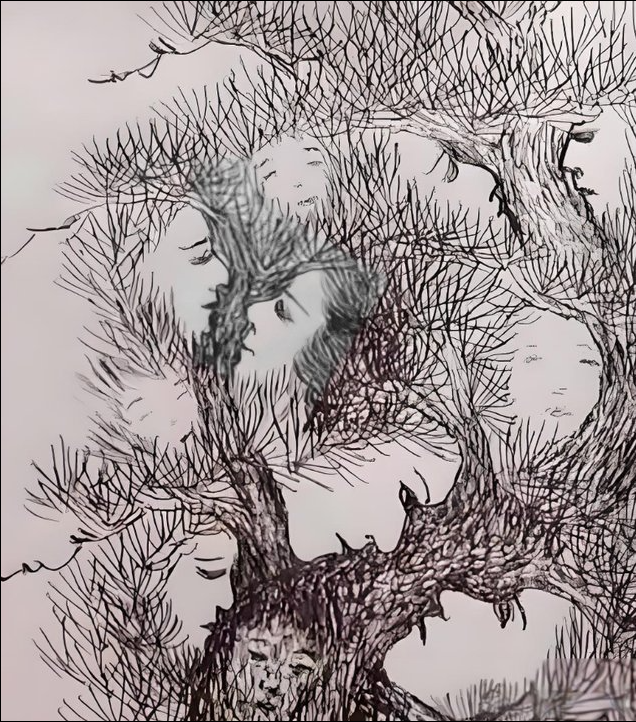
The Science of Pareidolia: Why We See Faces Everywhere
Pareidolia—our brain’s knack for spotting patterns—turns random stimuli into familiar shapes. Evolutionarily, spotting a face quickly meant safety or danger, so our minds stay on the lookout for eyes and mouths even where none exist. In the “Tree of Faces” drawing, the artist harnesses this wiring by suggesting just enough detail—a curved leaf becomes an eyebrow, a knot in the wood hints at an eye socket. The result? A delightful puzzle that hooks your attention and turns a simple tree into a community of silent observers.
Crafting the Illusion: Artistic Techniques Revealed
Pulling off a convincing face-tree illusion takes a deft hand. Here’s how the artist works their magic:
- Selective Detailing: Only minimal facial cues—eye slits, nose ridges, lip lines—are drawn. Your brain fills in the rest, completing each portrait from those tiny hints.
- Negative Space Mastery: Blank areas between branches form cheeks and brows. It’s like reverse drawing: the absence of ink shapes the feature.
- Line Weight Variation: Thicker strokes define the trunk and main profiles, while thinner lines sketch fine twigs. This contrast brings some faces forward and tucks others into shadow.
- Organic Flow: Branches sweep and curl like flowing hair, guiding your gaze from one hidden face to the next, as if each soul in the wood beckons you closer.

Emotional Resonance: Why Face Trees Speak to Us
There’s something eerily intimate about faces emerging from bark. Trees symbolize wisdom, resilience, and connection to the earth, while faces evoke empathy, recognition, and shared humanity. When you merge the two, you create a living tapestry that feels both ancient and alive—like ancestors whispering through leaves. Some profiles look serene, others contemplative or sorrowful, weaving a network of emotions that mirror our own inner landscapes.
Spotting Your First Portrait: A Beginner’s Guide
If you’re new to hidden-face illusions, here’s how to spot your first portrait in the tree:
- Scan for Symmetry: Human faces tend to be roughly symmetrical. Look for paired shapes—two clusters of leaves or knots that mirror each other.
- Follow the Flow: Trace the main trunk upward. Branches that fork at eye-level often cradle a hidden brow or cheekbone.
- Pause at Knots: Where the bark bulges, imagine an eye or a nose tip. Those natural bulges are perfect hideaways for facial features.
- Blink and Reset: Take a step back, blink, then look again. Your refreshed perspective will reveal portraits you missed on your first pass.

Creating Your Own Tree of Faces: Step-By-Step
Inspired to craft your own arboreal gallery? Follow this simple roadmap:
- Sketch a Basic Tree: Start with a sturdy trunk and a few major branches in pencil. Keep lines fluid, not rigid.
- Plot Face Outlines: Lightly pencil in profile shapes—noses and chins leaning along branch curves. Vary orientations for visual richness.
- Ink Key Features: With a fine liner, trace just the critical points—an eye here, a mouth there. Let your pencil marks guide you but resist detailing every face fully.
- Fill with Foliage: Surround each stealth portrait with leaves, smaller twigs, and bark texture. The denser the background, the greater the surprise when a face emerges.
- Erase & Refine: Remove stray pencil lines, leaving only the inked suggestions. Adjust contrast—darken some areas to make faces pop, lighten others to mask them.
Mindful Art: Finding Calm in Hidden Faces
Drawing or exploring a “Tree of Faces” can be a soothing form of art therapy. As you slowly trace branches and unearth hidden profiles, your mind drifts into a gentle focus, similar to meditation. Each discovered face brings a tiny spark of joy, melting away stress and honing your attention. Give yourself ten minutes a day to wander through these illusions—you’ll return feeling calmer and more creatively energized.

From Paper to Decor: Showcasing Your Face Forest
Once you’ve perfected your face-filled tree, why keep it locked in a sketchbook? Here are a few display ideas:
- Framed Centerpiece: A sleek black frame and white matte make your hidden portraits stand out, sparking conversation in any room.
- Custom Wallpaper: Digitize your drawing and create a limited-edition wallpaper for a cozy reading nook or home office.
- Textile Prints: Transfer the design onto cushions or tote bags—carry your mysterious forest wherever you roam.
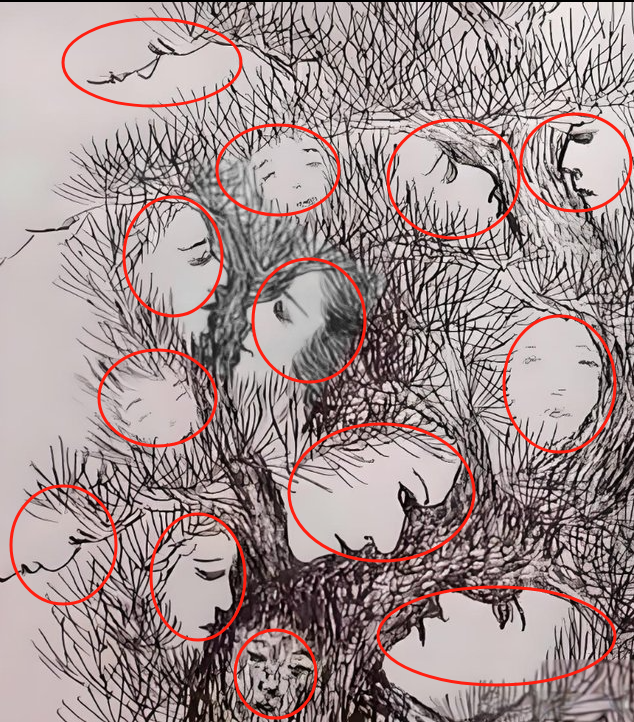
Conclusion: Embracing the Hidden Wonders Around Us
The “Tree of Faces” illusion reminds us that magic often hides in plain sight. By tapping into our innate pattern-spotting instincts, a simple sketch transforms into a gathering of silent spirits, whispering tales of nature and humanity entwined. Whether you’re decrypting its secret portraits or crafting your own face-forest masterpiece, let this art inspire you to look closer at the world around you. Because sometimes, all it takes is a fresh perspective to uncover the extraordinary.
